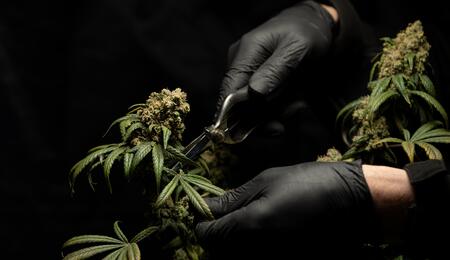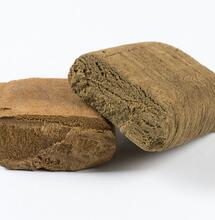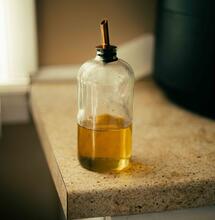Purple Haze

Purple genetics, and especially Purple Haze itself, are a topic of endless controversy within the growing community. Cold temperatures during flowering play a large part in the appearance of purple coloration, but in recent years varieties that express purplish, blue or red hues - without the need for a drop in temperature - are becoming hugely popular. In the midst of all this progress the original Purple Haze has apparently been lost, as with so many of the famous strains of the 1970s.
It is difficult to pinpoint the origin and characteristics of the original Purple Haze, and some claim that there never was a single, true-breeding strain of that name – that it is in fact merely a generic term for purplish pot, whatever the lineage. Others are adamant that the strain existed, and is now extremely rare, if not extinct. Those in the latter school of thought believe that the original Purple Haze was a cross between an early Dutch skunk and a Thai/Colombian haze, and that its descendents may be found in a smallish selection of purple outdoor varieties still available in the Netherlands today. The fact that the existing Dutch purple strains are very similar in appearance, effect and taste could be explained by this theory.
The majority of known purple strains are sativa-dominant, with a cerebral and uplifting effect (no doubt due to the Thai genetics that are so common with purple lineages), and a refined, delicate grape or hyacinth aroma. Often, Afghani or Indian indica varieties are used to create purple strains, due to their tolerance of colder temperatures. In today’s cornucopia of Cannabis varieties, there are strains with purple leaves only, those with purpling on just the buds, and those that express purple over the entire plant.
A Sweet Purple example shows purpling to the buds only
This beautiful Purple Kush exhibits some purpling throughout
The purple effect begins to express towards the end of the flowering cycle, as molecules that reflect the red end of the spectrum begin to accumulate. These molecules, called anthocyanins, form in response to successively cooler nights and shorter days, which leads to the idea that purple buds are just the result of cold temperatures. However, when grown from seed, purpling occurs to varying degrees – and often not at all – depending on the individual plant’s genetics.
Despite this, if a plant that has a tendency to purple is exposed to cooler-than-normal temperatures, the purple effect will be intensified. This is certainly the case with the present-day outdoor Dutch purples, which often are so purple as to almost appear black, while the stems and leaves remain lighter and greener in comparison. The original Purple Haze was said to share this tendency.
Whether or not the Dutch purples of today are truly the direct descendants of the original, they seem to have much in common with it. However, the focus has shifted onto more potent strains that will still go purple even indoors; while some of these genetics are incredible in their own right, it is sad that the original strains are being forgotten.



